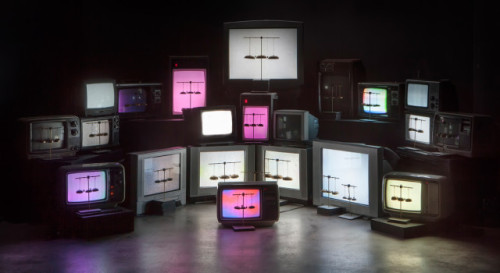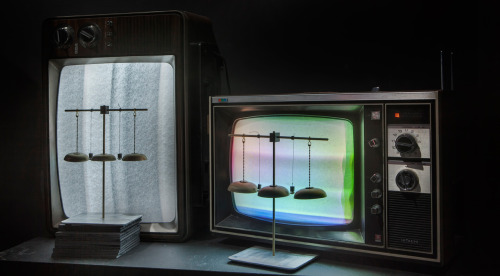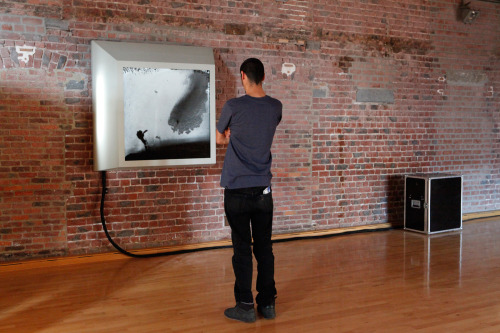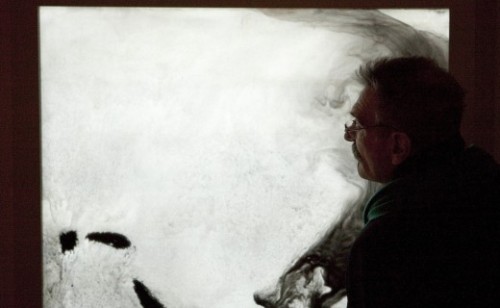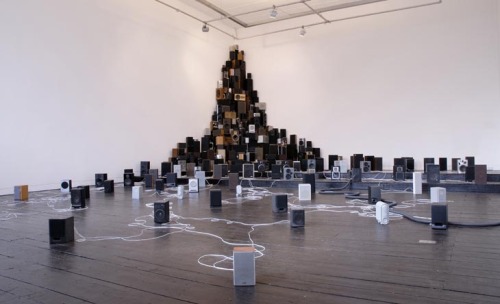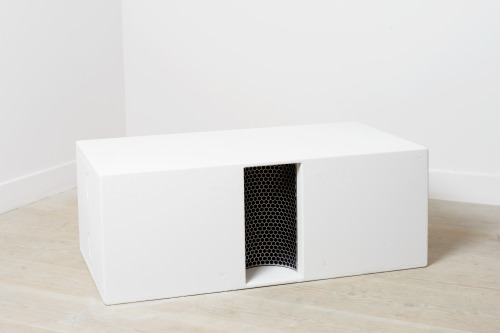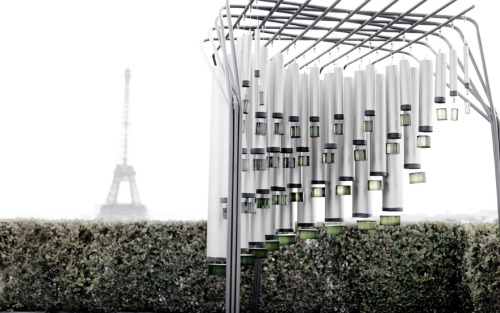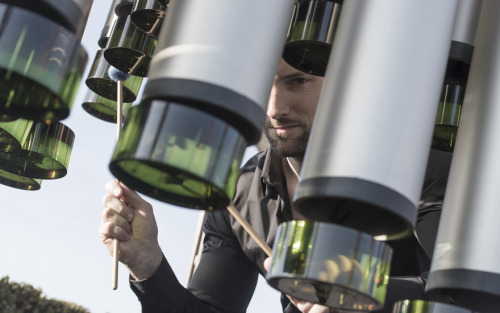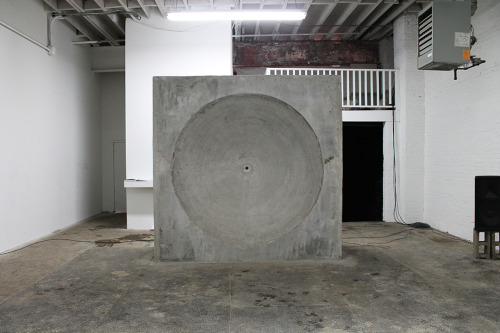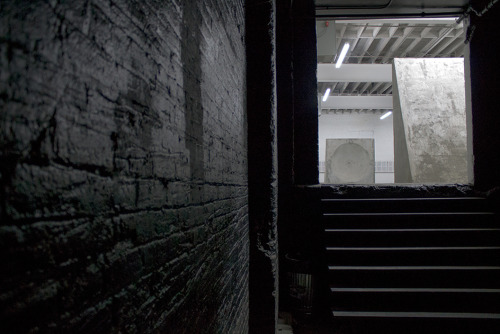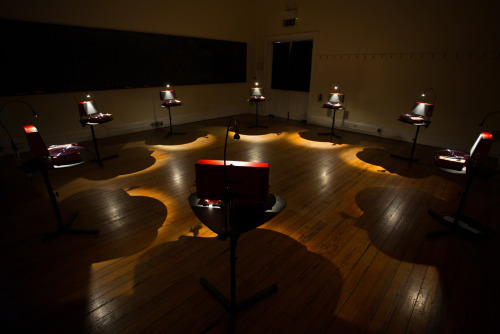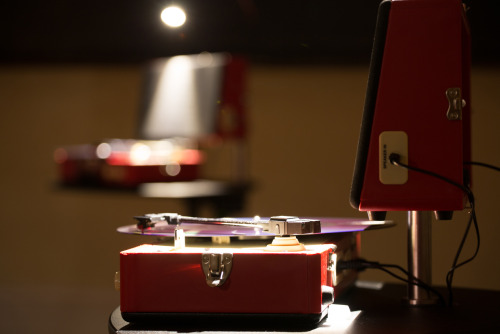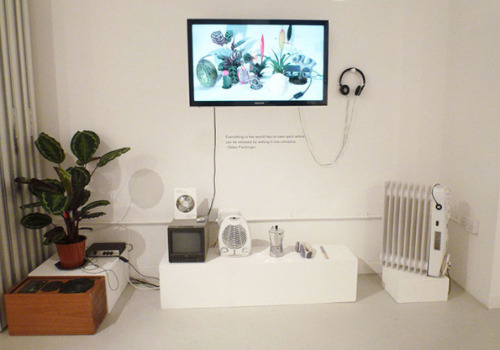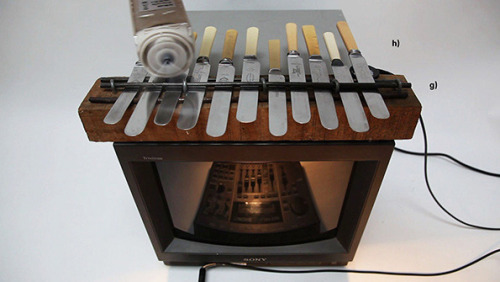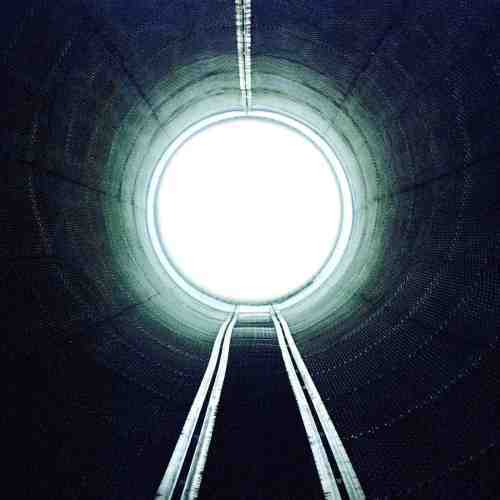
Sound art or installations are often hindered by their surroundings. As sound waves travel through the air, they also travel through walls and ceilings. This makes it difficult to completely close off a space from external noises, especially in an environment like an art museum, for example.
“Dinámicas del Vacío” (translation: “Dynamics of Emptiness”) is a sonic sculpture by artist Ariel Bustamante (we’ve seen work from him before) and architect Alfredo Thiemann. They created an huge artificial and soundproof space, isolated from the exterior. This way they can create a completely different, totally immersive experience. By using a 18 meter long, 3 meter wide suspended tube stuffed with sound equipment such as sub-basses and speakers hidden between the layers of insulation, they can set up an environment totally disconnected from the outside world on an ordinary street.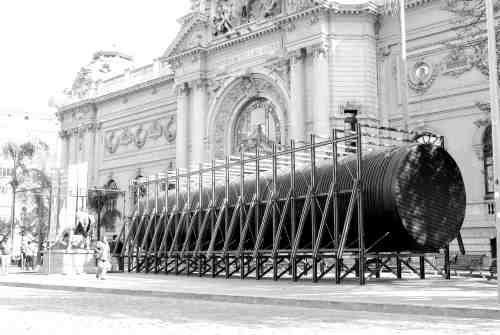
Inspired by a month’s stay in the Antarctic, Ariel Bustamante created a cold, distant, imagined landscape for the viewer to dwell in. Eerie sounds of snow are played against flashing abstract representations of the Antarctic, fueling spectators’ imagination of the unknown.
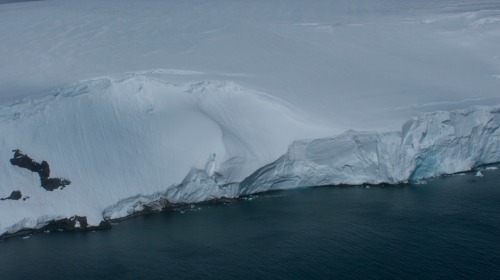
These kind of immersive experiences are quite scarce. A famous example is the Philips Pavilion, thought up and built by Le Corbusier, Iannis Xenakis and Edgar Varèse for the World’s Fair in 1958. These kind of works show that architecture and sound go hand in hand very well, and the effect the architecture has on the experience of sound is often underestimated.
See the process of placing the installation as well as an impression of the experience (from 04:15 on) in the video below.
 Sunday, August 31, 2014 at 14:58 tagged
Sunday, August 31, 2014 at 14:58 tagged  installations,
installations,  objects,
objects,  soundart,
soundart,  tv
tv 